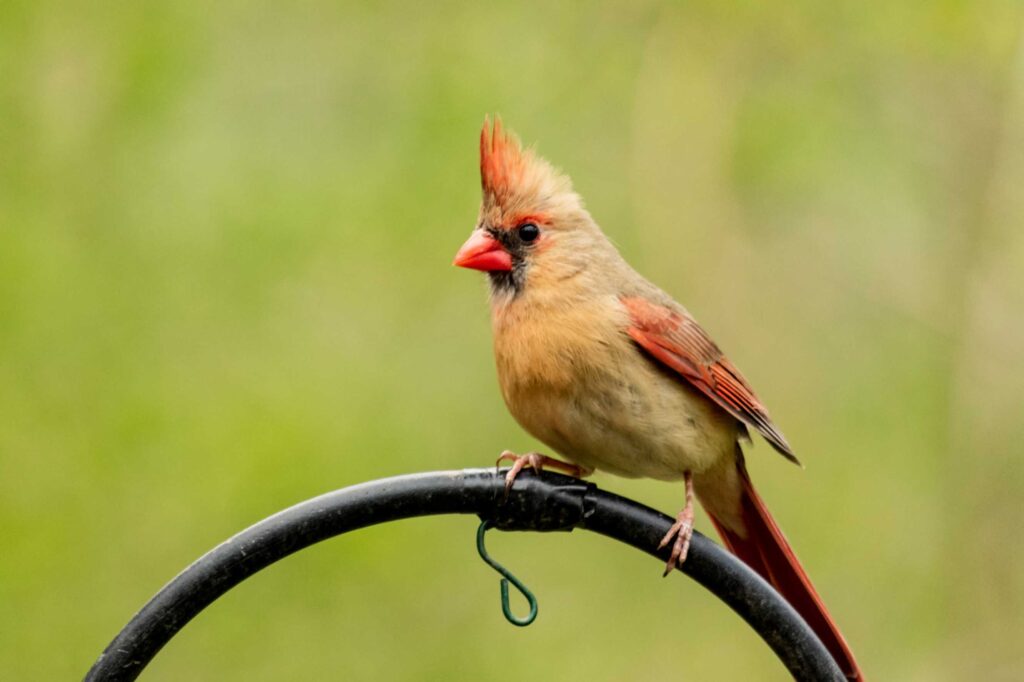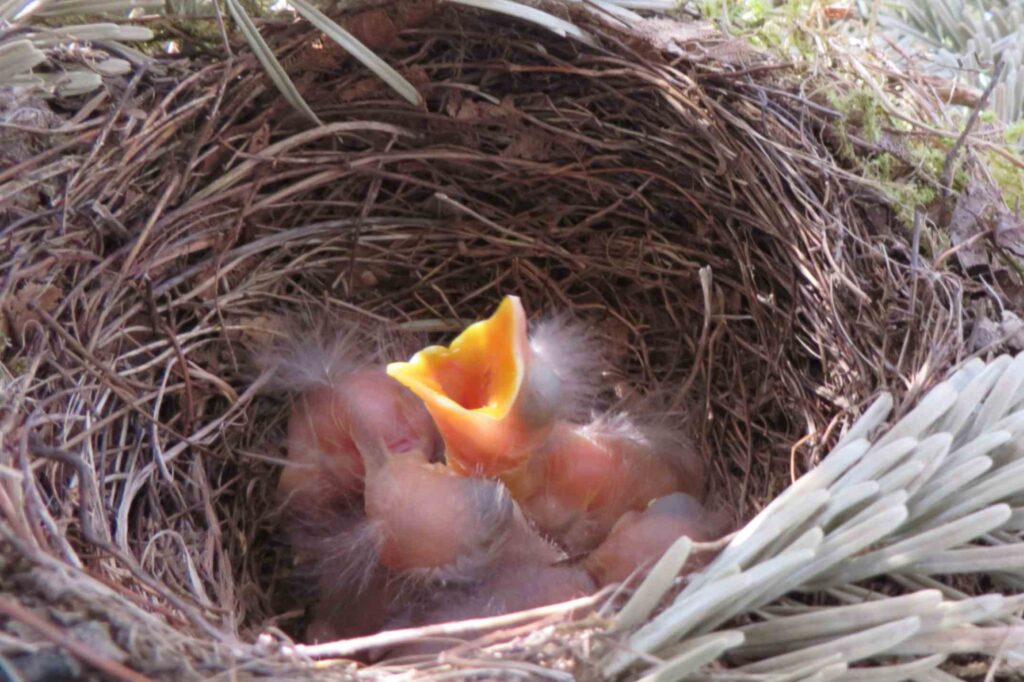Baby Cardinal
Few sights in nature are as charming as the delicate, fluffy form of a baby cardinal. These tiny birds, with their oversized heads and barely-there wings, captivate birdwatchers and nature lovers alike. While adult cardinals are known for their striking red plumage, baby cardinals bring a different kind of beauty with their soft, downy feathers and their sweet chirps that signal their reliance on their parents. In this article, we’ll take a closer look at the adorable life of a baby cardinal, from hatching to fledging, and learn more about what makes these little birds so special.
Cute Baby Cardinal
“After the snow is gone I went out front to trim the dead branches from the arbovitae and saw a nest there. I observed female cardinal nestling on eggs. The eggs hatched the first of May Next the baby birds flew out and had such wonderful looks on when I took their pictures. What I loved is the fact that I was not aware that the baby cardinal is born without red feathers on its body. I

Cardinal Mom on Duty
“A few days after buying the new hanging fern basket I was delighted to see one cup of a nest with two speckled brown and creme eggs in it. That is why I have waited for the next few weeks to see how the cardinal momma was hard at work tending to the nest. To see the two birds take equal part in the chicks, feeding them immediately after they were hatched is unforgettable.

Juvenile Cardinal
A juvenile cardinal is defined here as a young or immature cardinal bird, and this paper only deals with the Northern Cardinal. Babies of cardinals differ in appearance from adult ones significantly quite often. Here’s how you can identify them:Here’s how you can identify them:
Coloration: Although the grown up male cardinal birds are identifiably by their bright red coloured feathers and the female one by brown and reddish colours the young cardinals are a little brownish having a slight touch of red on their tail, wings and crest.
Beak: From hatching, their beaks are black or some other dark colour which in some way change to the bright orange or reddish seen in the adults.
Crest: Juveniles are likely to lack the obvious crest that seems to be characteristic of adult cardinals and their plumage may seem scruffy, fluffy in nature.
Behavior: Juveniles are always associated with the parents depending on their feeding habits until they mature and are capable of searching for food themselves.

4. Ready to Fly
To say that a young cardinal is ‘ready to fly’ means that the bird has grown to the fledging stage. By this stage, the bird has grown strong enough, it has grown wing feathers, the muscles required in flying have been coordinated so that the bird can take its first flights. Here’s how this process unfolds:Here’s how this process unfolds:
Fledgling stage: Young cardinals get pre-disposed to flight and starts wing flapping and short fly likely to perch and hopping across trees or a feeble take off from trees. They may not be able to fly them to optimum manner at initial points of time but could learn while on the field.

4. Fluffy Baby Cardinal Birds
Fluffy baby cardinal birds known as nestlings are so small and helpless having just feathers to cover their rail thin body with sparse down. There bodies are pinkish and I thouhgt there eyes where closed or barely opend at first. Among them, the softer down feathers get replaced the mature feathers as they advance in age and grow bigger. Baby cardinals remain small and not very mobile; they must depend with their parents for warmth, as they usually stay in the nest most of the time, and for their food. Their heads are also large and elaborated accompanied by big beaks and they often chirp for foods. In their lifetime, they evolve to juvenile birds, though in aspects of their early development, they have a very soft fabe.

5. Redbird Grows Up
As a redbird, or Northern Cardinal, grows up, it starts as a tiny, fluffy nestling, entirely dependent on its parents for warmth and food. Over time, it develops feathers, with juveniles displaying a mix of brown and red hues. During the fledgling stage, it practices flying and learns to forage under the guidance of its parents. Males gradually develop their striking red plumage, while females gain a more subtle brownish-red coloring. By adulthood, cardinals are strong, independent birds known for their bright colors and distinctive crests, ready to find mates and raise their own young.

6. Just Hatched
A cardinal at birth is an extremely small and vulnerable bird that is born with its eyes shut and almost no feathers to speak of and it must be entirely dependent on its parents. They have an pinkish skin, a massive head with a relational large beak. At this stage the baby cardinal is not able to move or even feed itself; so the parents taken insects and seeds to feed the baby cardinal, and feed it very often so that it can grow fast. In the next few days, down is followed by more feathers and the chicks’ eyes begin to open as it starts its developmental process towards fledging to independence.

6. Feeding Time With Mom

Young Feathered Friend

Found a Cardinal Nest

A Tasty Caterpillar Snack

Baby Cardinal Eating Seeds

Watching baby cardinals grow from tiny, featherless hatchlings into vibrant adults is a beautiful journey full of heartwarming moments. Whether they’re nestled in the safety of their family’s nest or bravely taking their first flight, these baby birds remind us of the delicate yet powerful cycle of life in the natural world.






